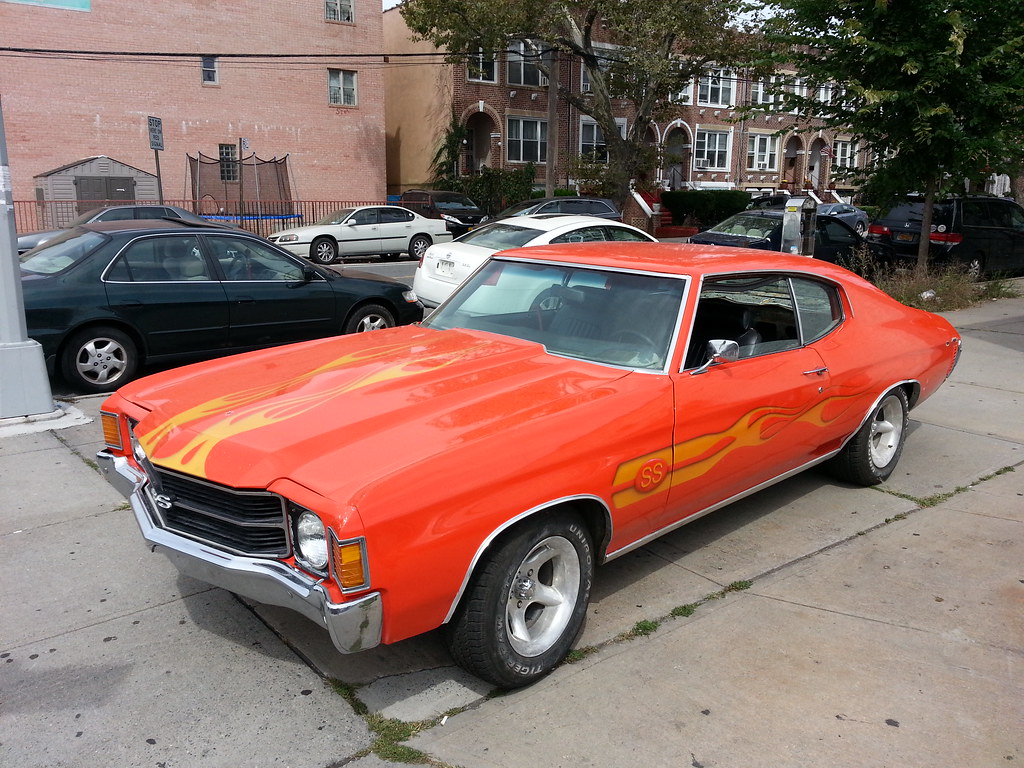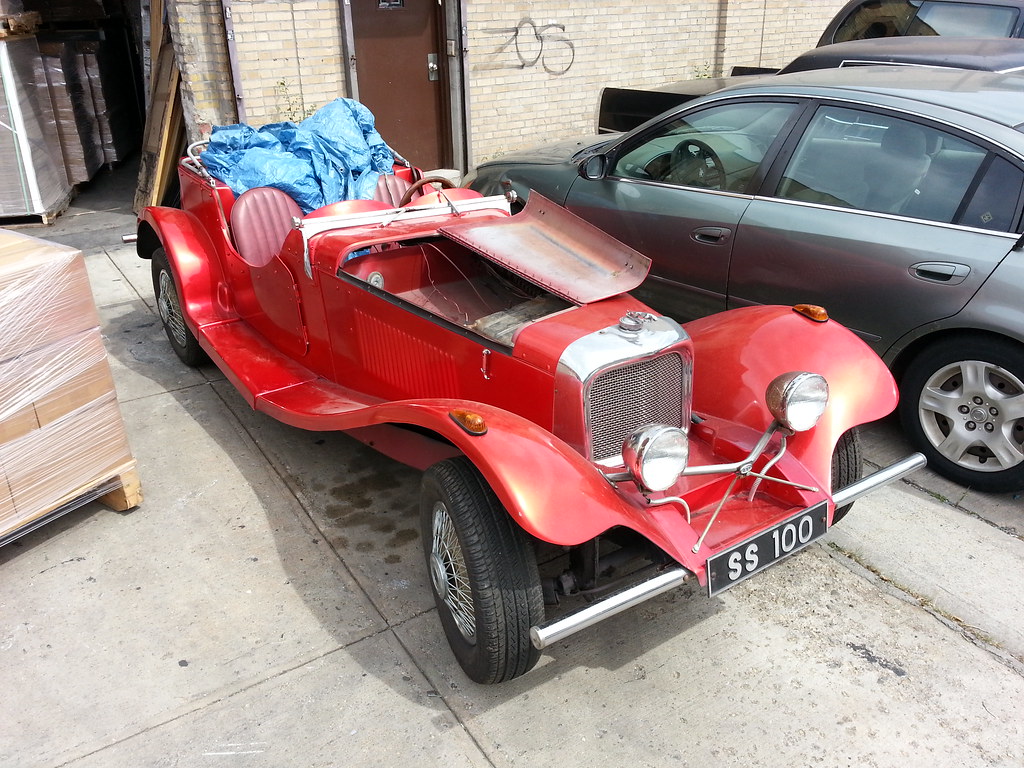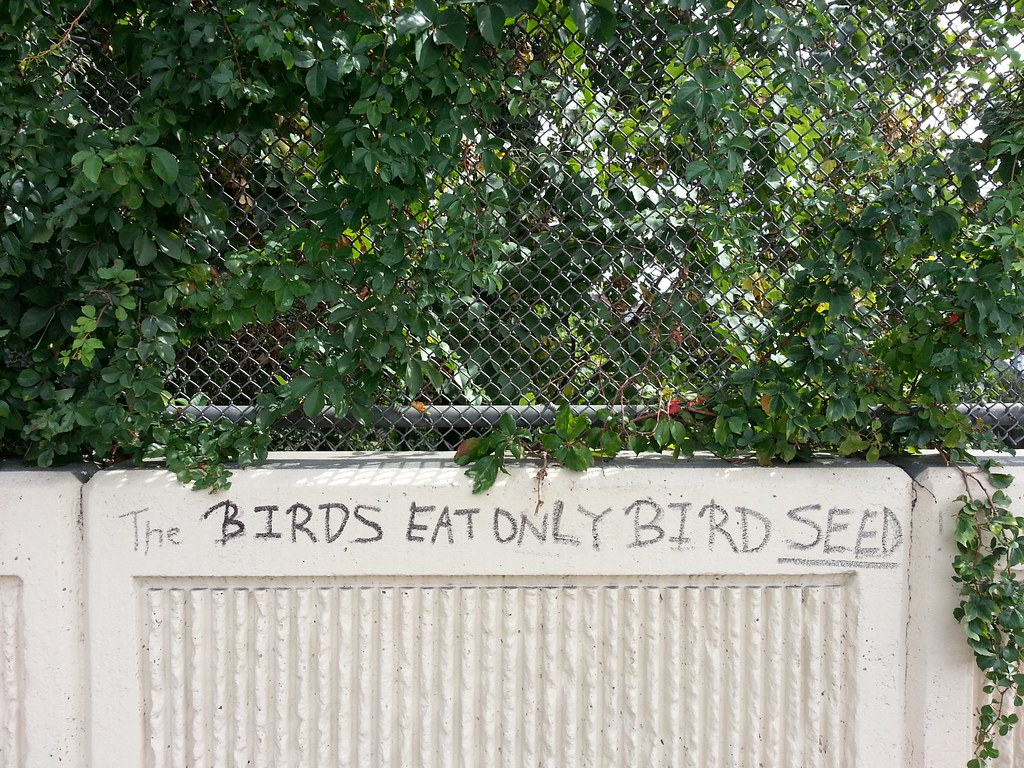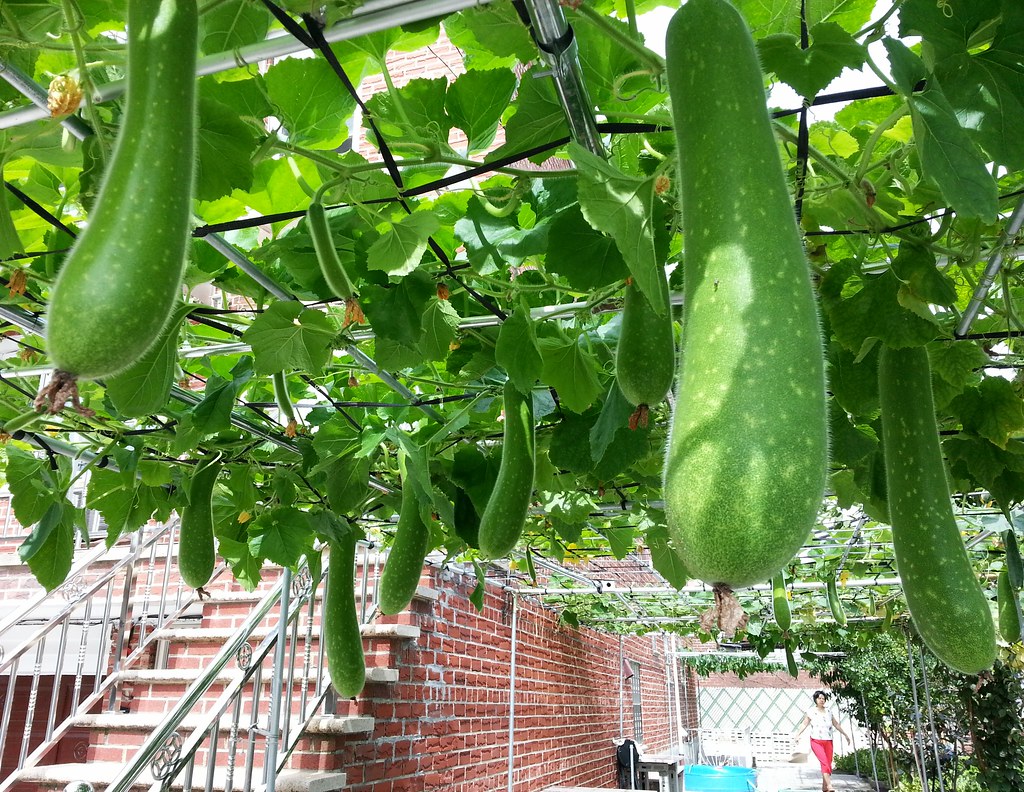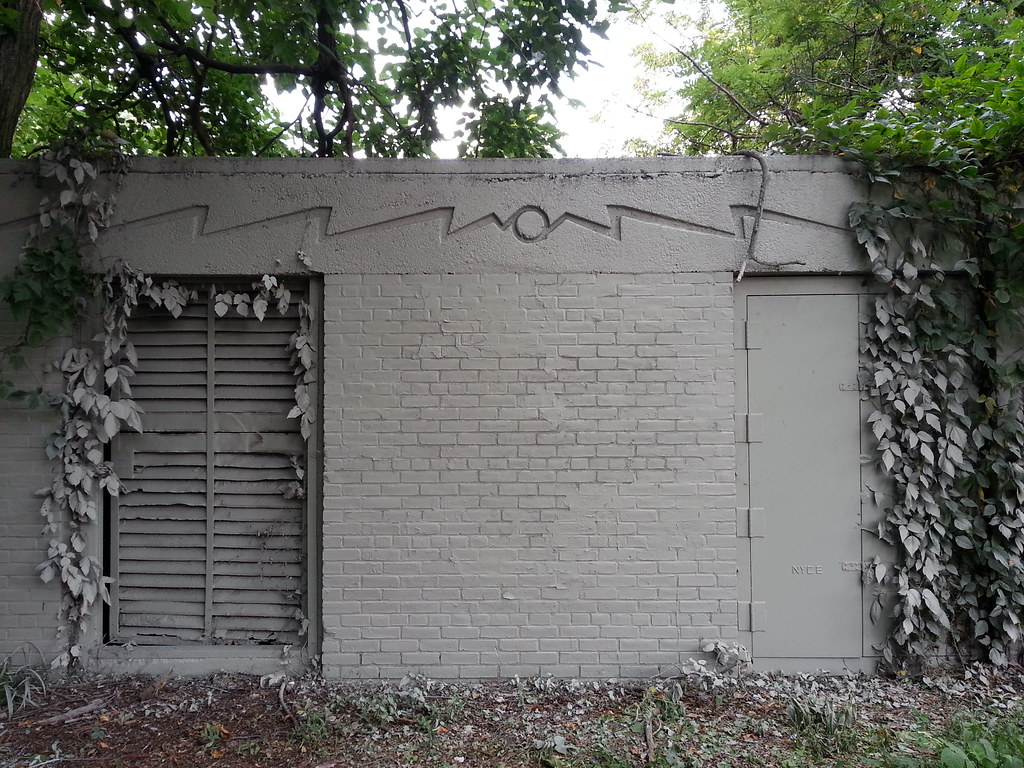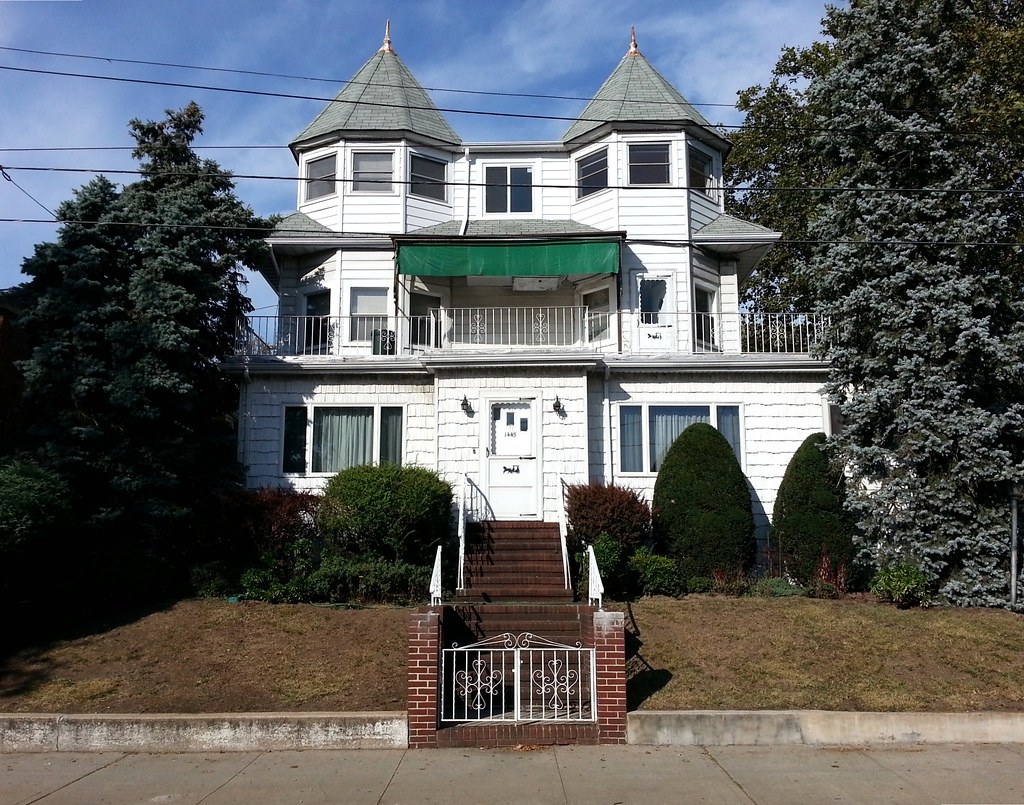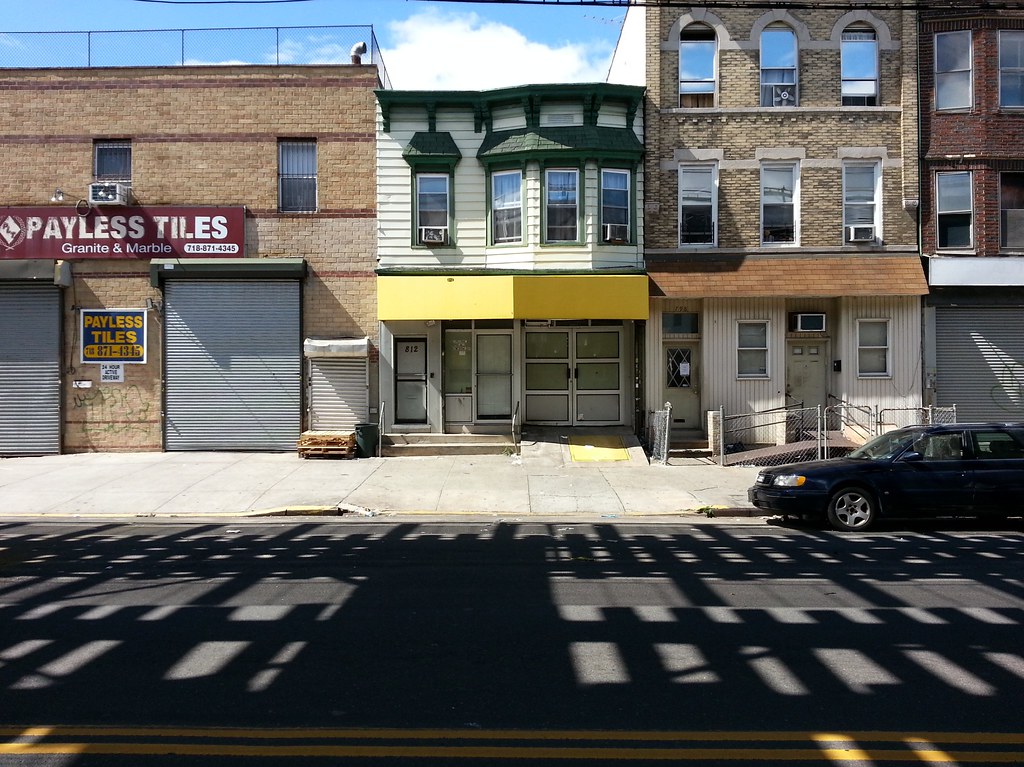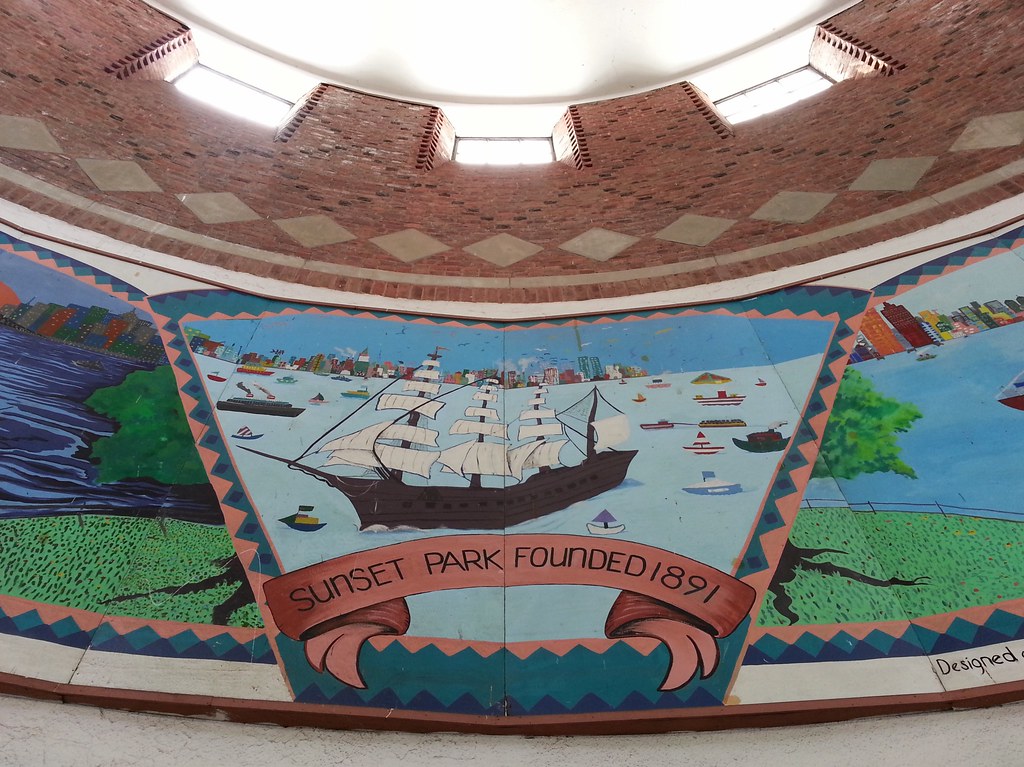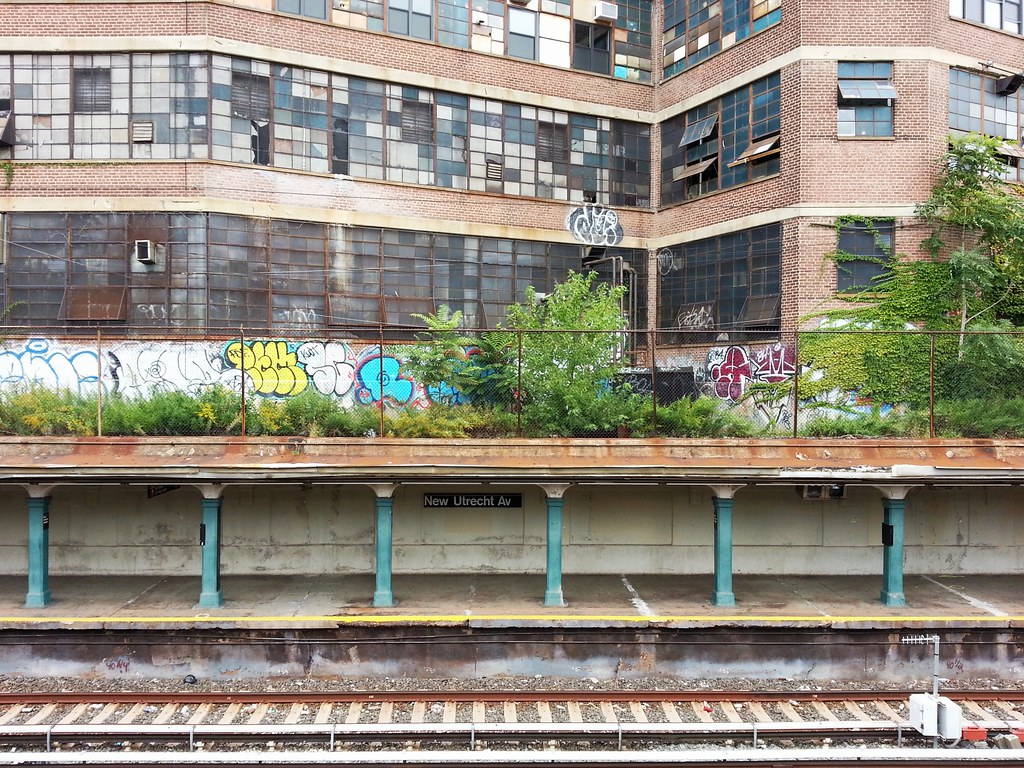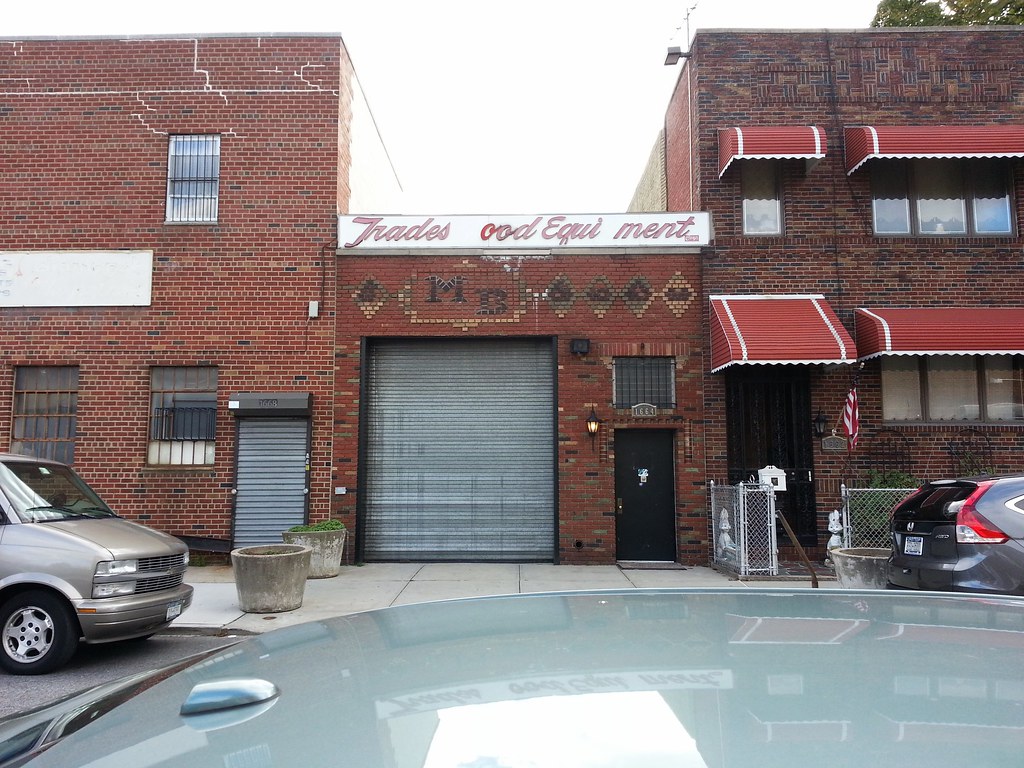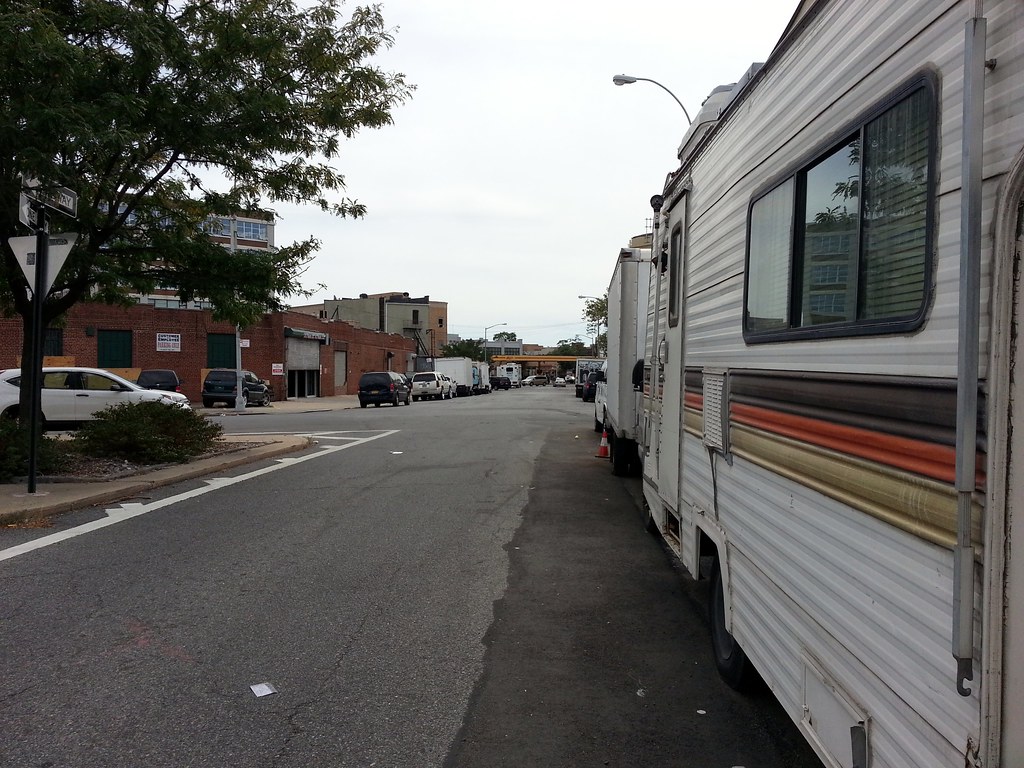
This is one of two short remaining stretches of Old New Utrecht Road, a thoroughfare that dates back before 1850. The road has been wiped out between 14th and 17th Avenues, but vestiges of its former route running diagonally across the street grid can be found in aerial images: heading south from 14th Avenue, look for the handful of buildings with oddly angled midblock walls that would have once fronted the road.
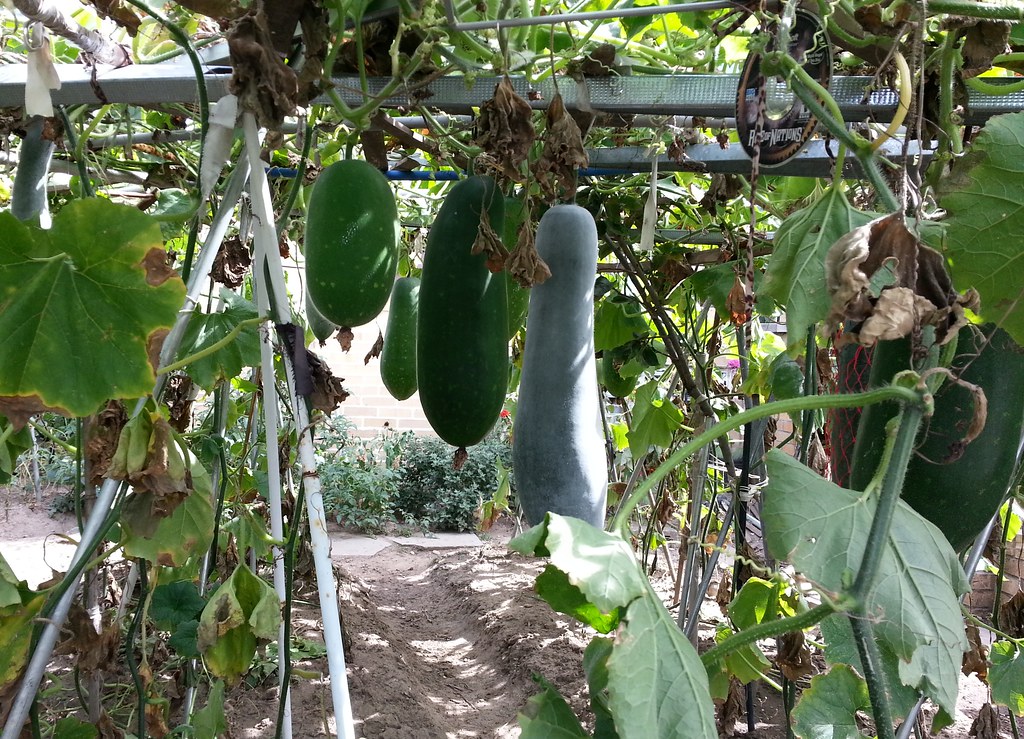
Winter melons, I believe. And note the anti-bird CD (Rise of Nations).
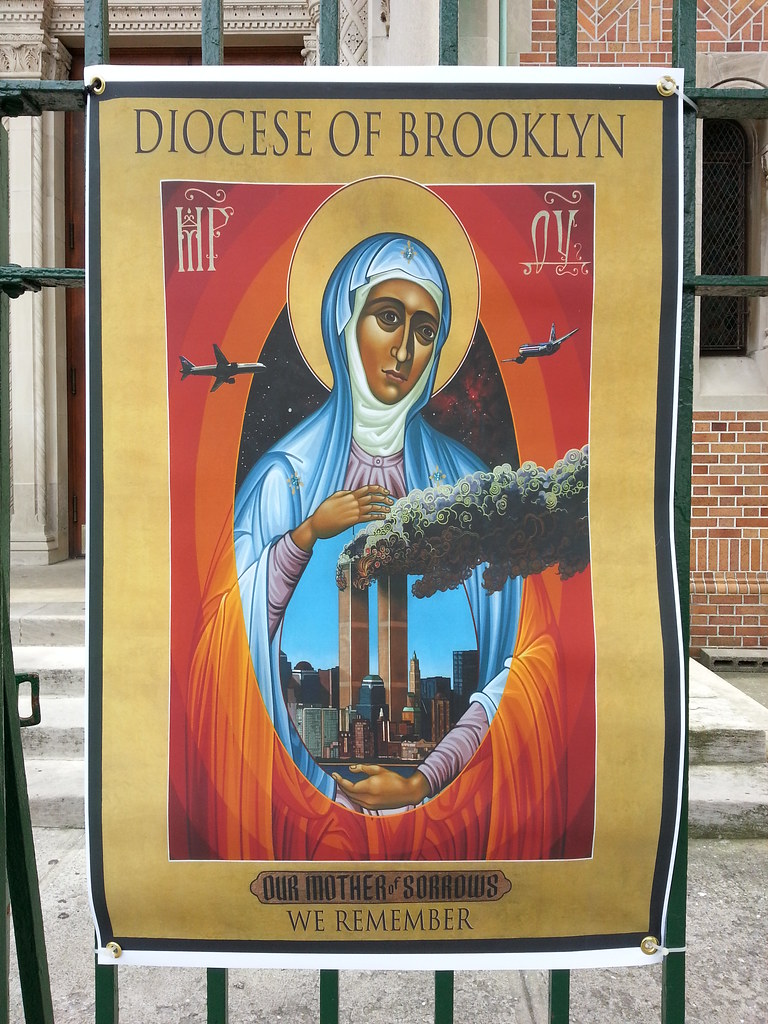
According to a crossing guard hanging out nearby, Our Lady of Guadalupe Church only puts up this poster and its companion around the anniversary of 9/11. I'm not counting temporary displays in my tally of 9/11 memorials, which is why this one, beautiful as it is, doesn't make the official list.
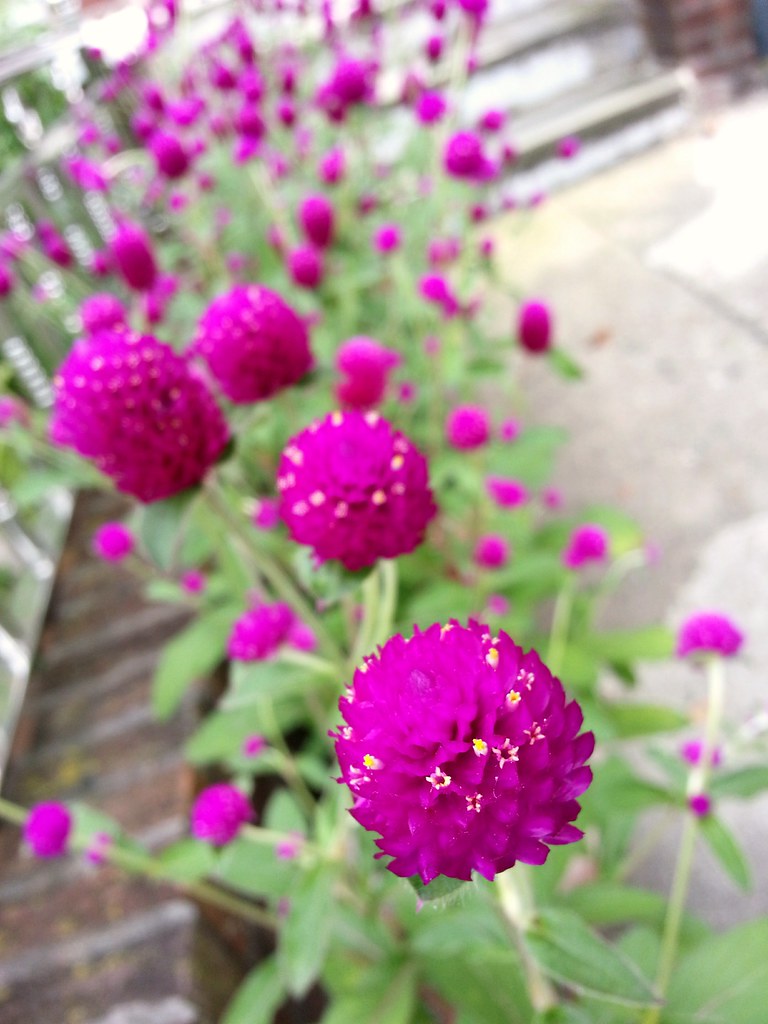
Tiny white and yellow florets growing from the magenta bracts
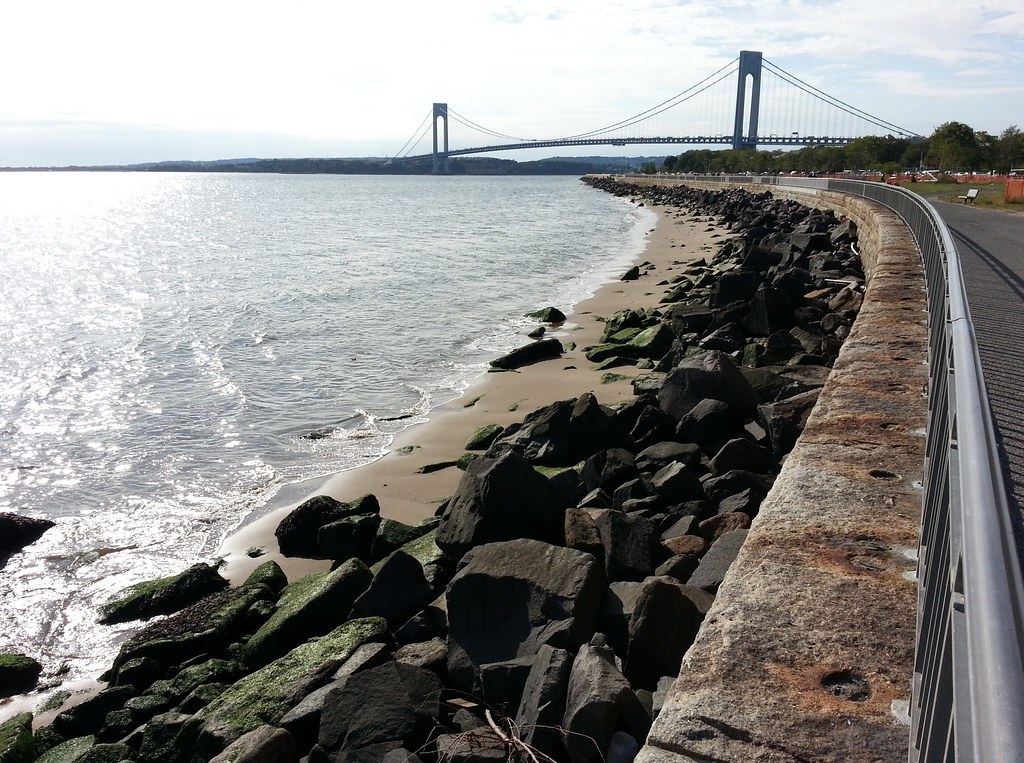
At 4,260 feet, the main span of the Verrazano-Narrows Bridge was once the longest suspension bridge span in the world, and it still holds the title of longest in the Americas.
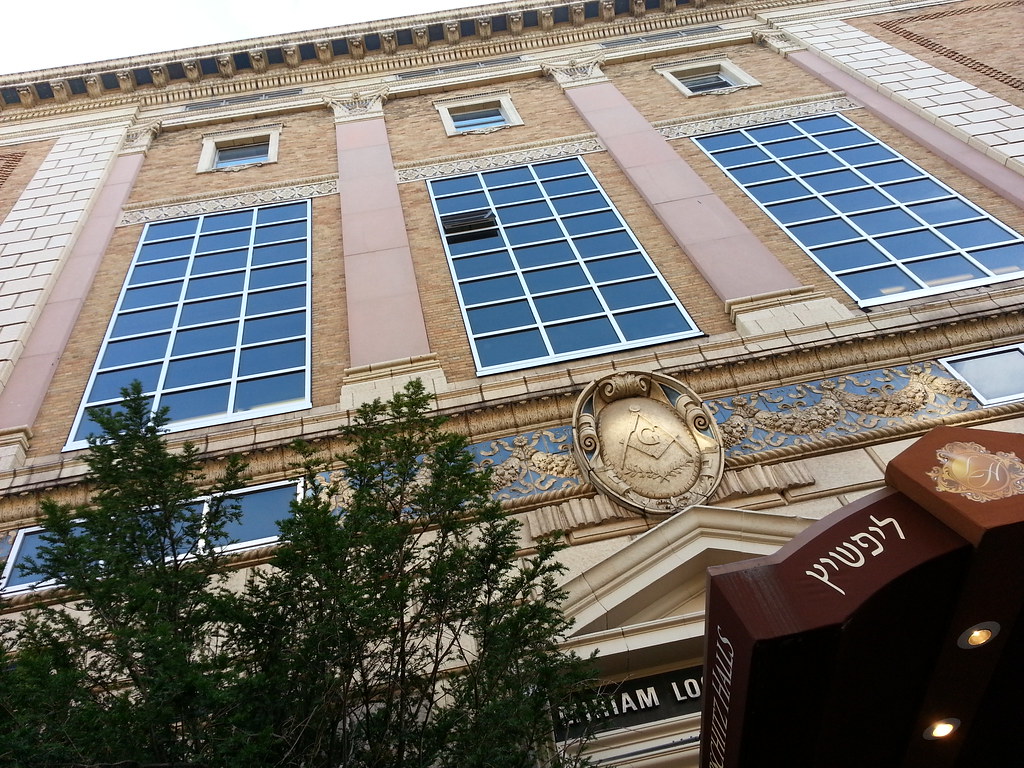
This was originally the Menora Masonic Temple, and its cornerstone came from Solomon's Quarries in Jerusalem.

These people are purchasing live chickens (packed in the yellow crates) for the controversial annual ritual of kapparot practiced by some Orthodox Jews in the days leading up to Yom Kippur. In this custom, a chicken is "swung" ("waved" is a more accurate description, as you can see in this NY Times video) three times above one's head, symbolically transferring one's sins to the bird, and then slaughtered. In some cases, the meat is donated to those in need (some articles I've read say this rarely happens, while others say it usually does). In recent years, a growing number of animal rights activists and rabbis have been vocally denouncing kapparot as a cruel practice that violates the Jewish prohibition against the infliction of unnecessary pain on animals. They encourage instead the following of an alternative tradition in which money is used in place of a chicken.
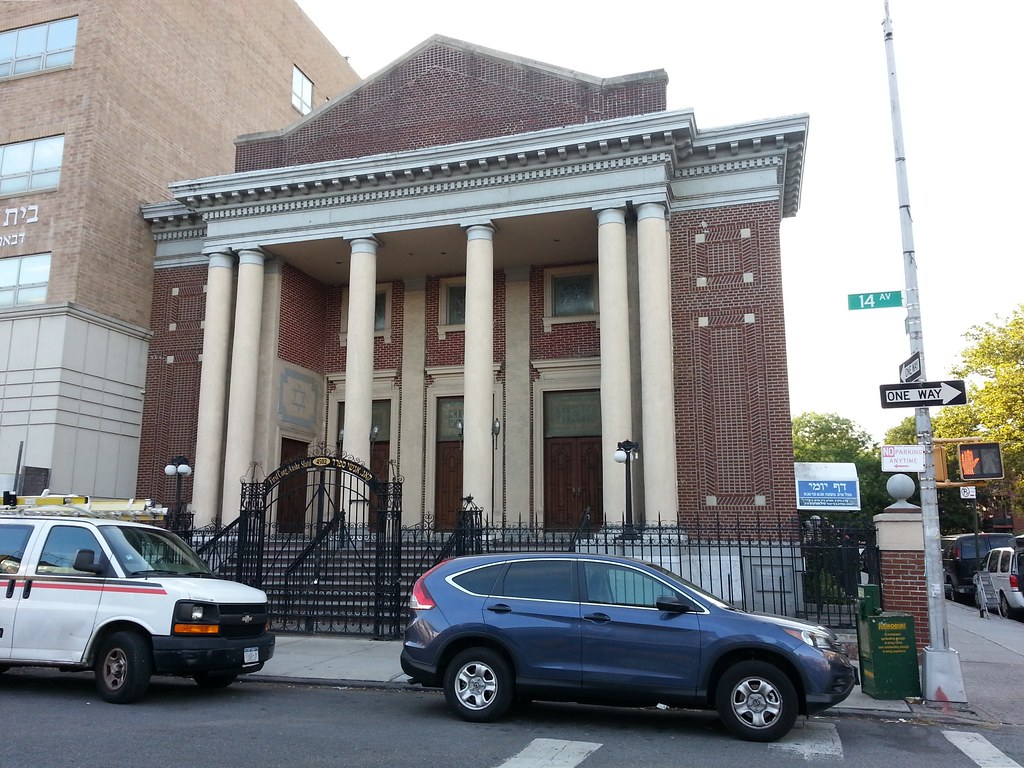
The famed cantor Yossele Rosenblatt, who appeared as himself in a cameo role in the landmark 1927 talking picture The Jazz Singer after turning down a larger part for religious reasons, served as chazzan here at Anshe Sfard for a couple of years until the synagogue's finances collapsed in the stock market crash of 1929. You can hear some of Rosenblatt's recordings, recently digitally restored by a devoted fan, here, and you can watch a musical tribute to "the greatest chazzan of all-time" here.
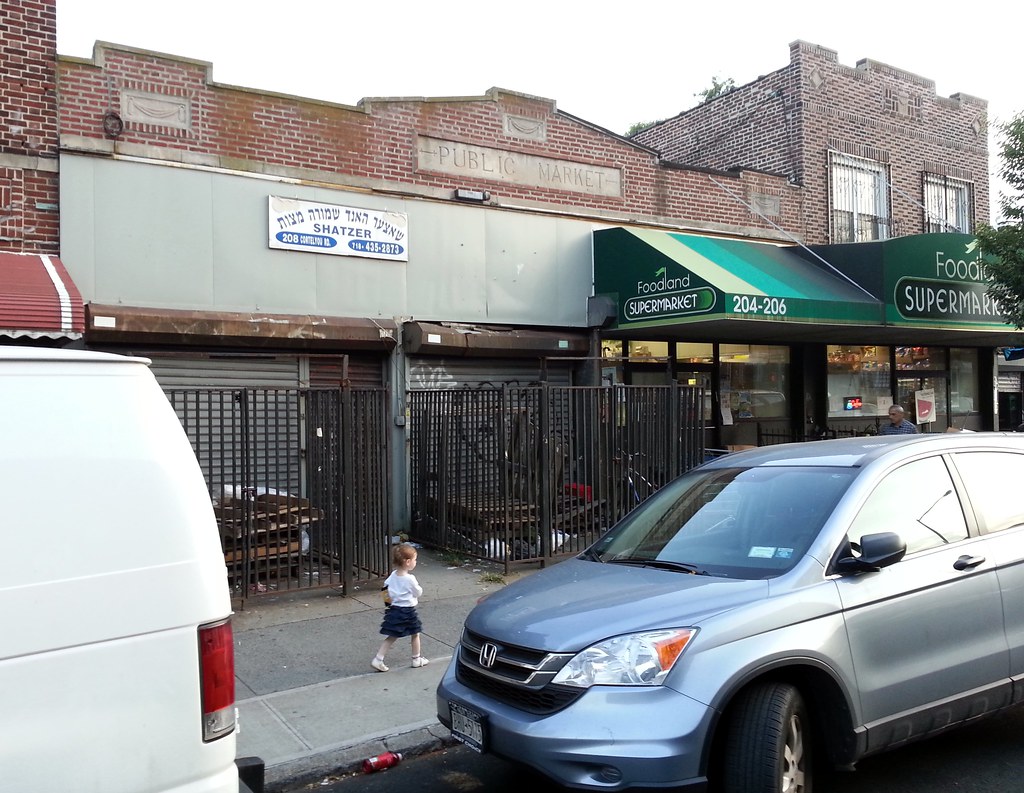
Perhaps once a smaller version of the nearby Thirteenth Avenue Retail Market, this building is now occupied in part by the Foodland Supermarket and in part by the Shatzer Matzah Factory.

And it's looked like this for more than two years.

In his failed bid for the Democratic mayoral nomination, Mr. Thompson pushed hard to win the votes of the city's Orthodox Jews. The text of the second bullet point on these posters, from what I can cobble together (here's a closer look), trumpets his opposition (which in reality was just a vague call for compromise) to the "billionaire Bloomberg" administration's recent decision to require parental consent before the performance of metzitzah b’peh, an ancient but potentially risky circumcision practice in which the mohel uses his mouth to suck blood from the infant's wound. It might seem strange that such an issue would get second billing on a campaign ad, but the new regulation infuriated the city's ultra-Orthodox communities (the target audience of these Yiddish-language posters in heavily Jewish Borough Park), forcing all the Democratic mayoral candidates to publicly state their position on the matter.
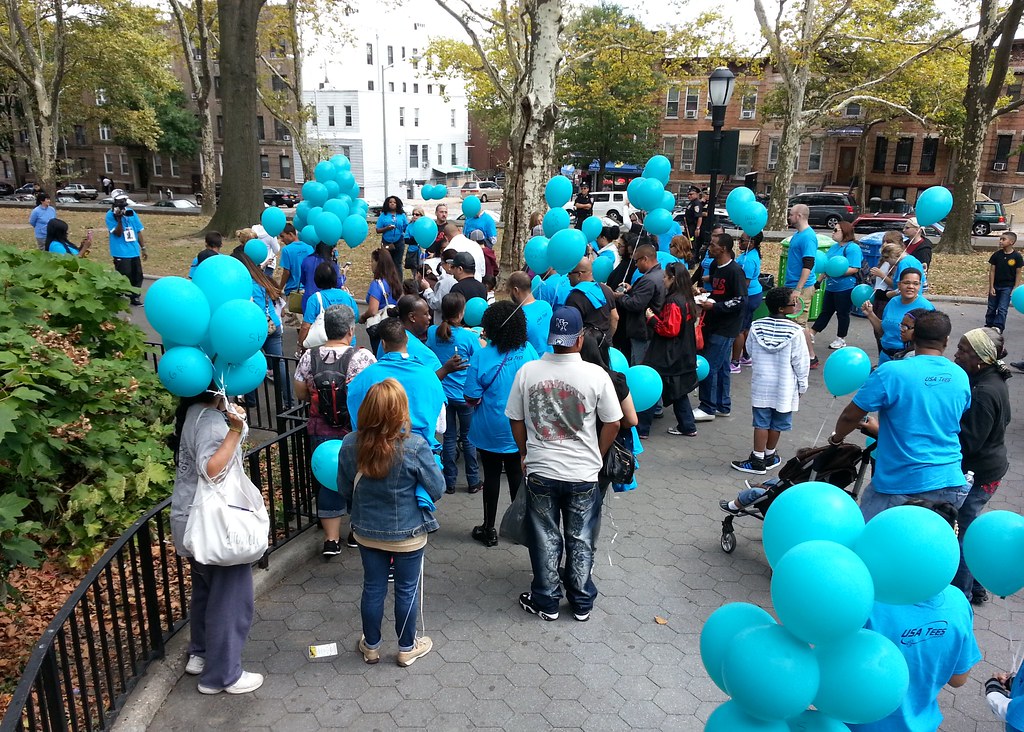
of the fourth annual Maureen Henry Walk of Hope. I just happened to stumble upon the start here in Sunset Park.
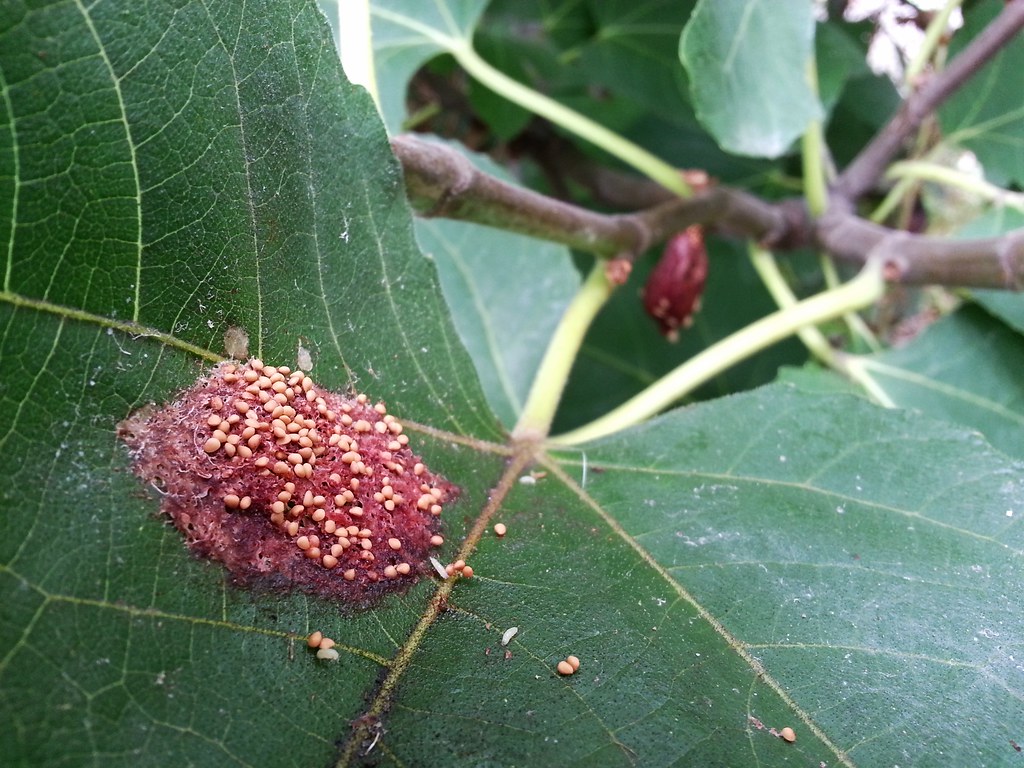
Today's walk set a new record for me: I saw at least 50 fig trees as I navigated the streets of Dyker Heights and Bensonhurst. (Brooklyn's Italian neighborhoods are known for their abundance of figs.)
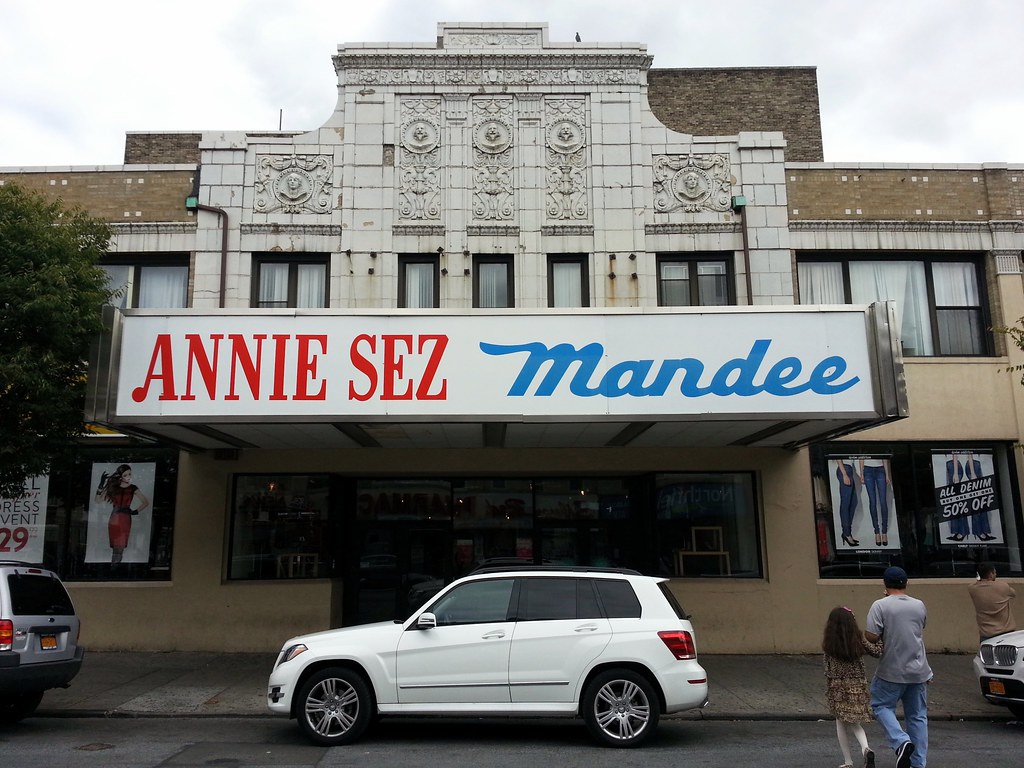
"Distinguished as one of the most enduring neighborhood movie palaces in New York", the Walker (named not after the noble pedestrian, but rather the scandal-tarred former mayor) was open from 1928 until 1988, although it spent its last few years as a four-screen multiplex. You can see some old photos of the beautiful interior here.
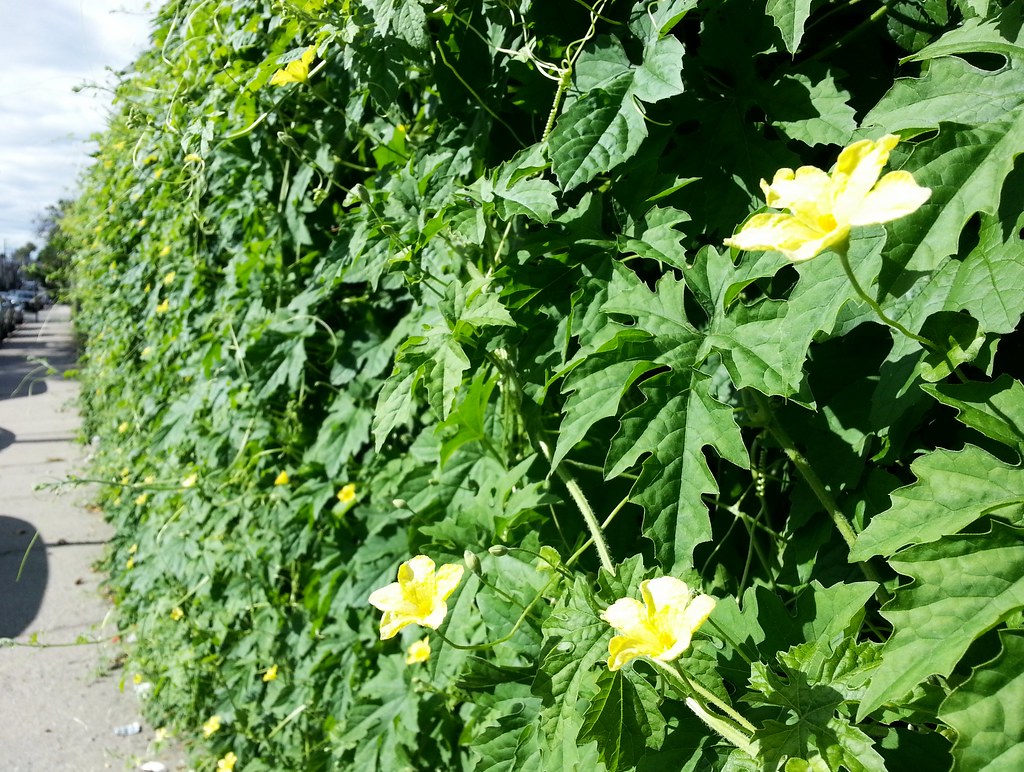
Despite the name and the freakish appearance of the fruit, these flowers are delightfully fragrant. The thick growth of the vines conceals what's on the other side of this fence: a long and narrow, densely planted vegetable garden tucked in between 62nd Street and the parallel tracks of the N Train, running almost the entire length of the block between 10th and 11th Avenues. (Aerial view here.) It's nearly half an acre in area, and there's a tremendous amount of stuff growing back there, but I saw no indication that it's a community garden. I wonder if someone's just leasing the property from the MTA for use as an urban farm.

A kind of clever but mostly just weird name for a lingerie store

I often see metal streetscape components that were cast in India, China, and Harrison, New Jersey, but this is the first time I've noticed one from Thailand. Maybe I just haven't been paying enough attention to the tops of fire hydrant bollards!

Yet another use for one of these oft-ignored sidewalk fixtures

This gap in the fence leads to a little makeshift shack and a bench hidden in the dense overgrowth between 61st Street and the tracks of the Bay Ridge Branch.

That's the Bay Ridge Branch down low and the Sea Beach Line (N train) higher up, just visible through the trees in the background.

Another erstwhile laundry along the tracks of the Bay Ridge Branch

and the ubiquitous red plastic bags of Chinatown. (The linked article is about Manhattan's Chinatown, but I imagine the same reasoning applies here in Brooklyn.)
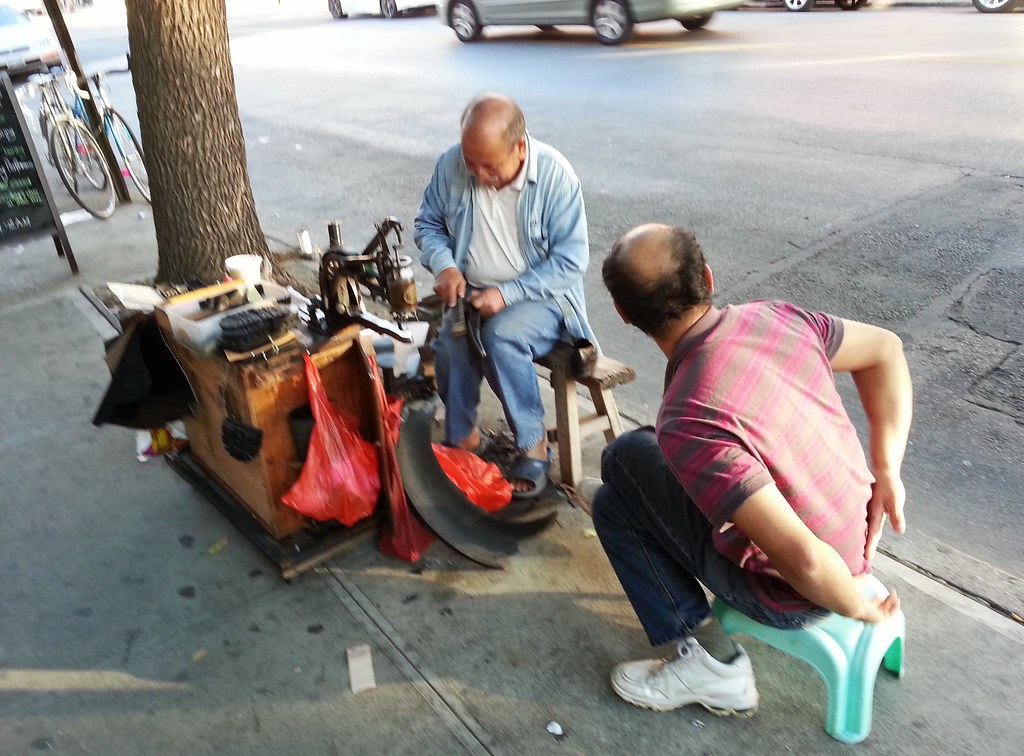
Pardon the blurry photo. This is one of two men I saw fixing shoes on the sidewalk of 8th Avenue.

